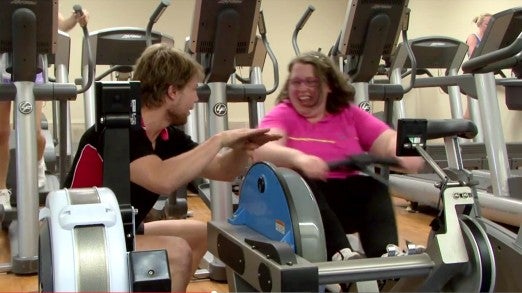Lessons
| Lesson 1 What makes a community liveable for diverse groups of people? | |
| Australian Curriculum links | |
ACHGK043 The factors that influence the decisions people make about where to live and their perceptions of the liveability of places
ACHGK046 The influence of social connectedness, community identity and perceptions of crime and safety on the liveability of places
|
|
| Integrated Teaching Learning and Assessment | Resources |
Pre-viewing/Scaffolding Activities
|
Activity sheets: Picture difference (Pictures A and Pictures B) Activity sheet: Defining liveability Activity sheet: What makes a community liveable for different people? |
Image Caption: Stella Young, Room for change,, 20 Year: 20 Stories
| Lesson 2 Assessing the liveability of your local suburb | |
| Australian Curriculum links | |
ACHGK043 The factors that influence the decisions people make about where to live and their perceptions of the liveability of places
ACHGK046 The influence of social connectedness, community identity and perceptions of crime and safety on the liveability of places
|
|
| Integrated Teaching Learning and Assessment | Resources |
|
Google Maps or a physical map of local area Extension: PowerPoint presentation |
Image Caption: Dee at the deli. Dee’s Place, 20 Year: 20 Stories
| Lesson 3 Disability rights and accessibility | |
| Australian Curriculum links | |
ACHGK043 The factors that influence the decisions people make about where to live and their perceptions of the liveability of places
ACHGK046 The influence of social connectedness, community identity and perceptions of crime and safety on the liveability of places
|
|
| Integrated Teaching Learning and Assessment | Resources |
Ramped up Viewing activities
Post-viewing activities
Viewing activities
Post-viewing activities
Viewing activities
Post-viewing activities
|
Resource sheet: Hypothetical discrimination scenarios Resource sheet/Activity sheet: Disability Discrimination Act and Access to Premises Ramped up video Activity sheet: Ramped up Room for change video Activity sheet: Room for change |
Image Caption: Dee working hard at the gym. Dee’s Place, 20 Year: 20 Stories
| Lesson 4 Assessing and improving the liveability of your school environment for people with disabilities | |
| Australian Curriculum links | |
ACHGS047 The strategies used to enhance the liveability of places, especially for young people, including examples from Australia and Europe
ACHGS053 Present findings, arguments and ideas in a range of communication forms selected to suit a particular audience and purpose; using geographical terminology and digital technologies as appropriate
|
|
| Integrated Teaching Learning and Assessment | Resources |
Extension activity
|
Disability Access to Premises-Buildings Standards (2010), Disability Discrimination Act Activity sheet: How accessible is your school? Activity sheet: Proposal template Map or blueprint of school |
| Lesson 5 Examine the importance of accessible transport | |
| Australian Curriculum links | |
ACHGK043 The factors that influence the decisions people make about where to live and their perceptions of the liveability of places
ACHGK044 The influence of accessibility to services and facilities on the liveability of places
|
|
| Integrated Teaching Learning and Assessment | Resources |
|
Explore different issues around transport accessibility. Buses Access for All Viewing activities Introduce the video Access for all. Explain how it is about making public transport accessible for people with disabilities. Watch the video Access for All. Students answer the questions in the Activity sheet: access for all after viewing the video for a second time. Post-viewing activities Using the viewing questions as a scaffold, facilitate a class or small group discussion about the liveability issues raised. Focus on:
Trains Graeme Innes vs. Railcorp Pre-viewing activities
Viewing activities
Post-viewing activities
|
Access for all video Activity sheet: Access for all Graeme Innes vs. Railcorp video Resource sheet: Sydney Morning Herald opinion piece Clear announcements cannot stay in RailCorp's too hard basket Activity sheet: Clear announcements cannot stay in Railcorp’s too hard basket. Literacy activity sheet: Clear announcements cannot stay in Railcorp’s too hard basket. |



